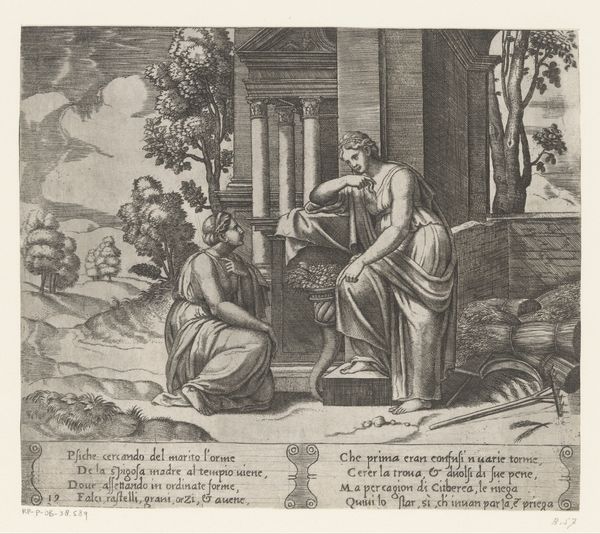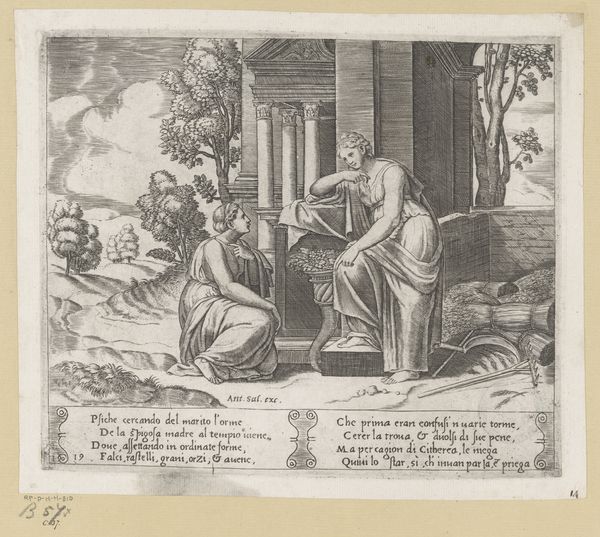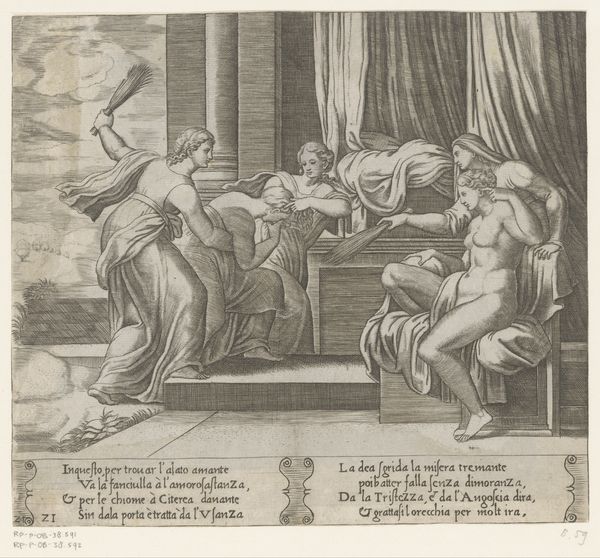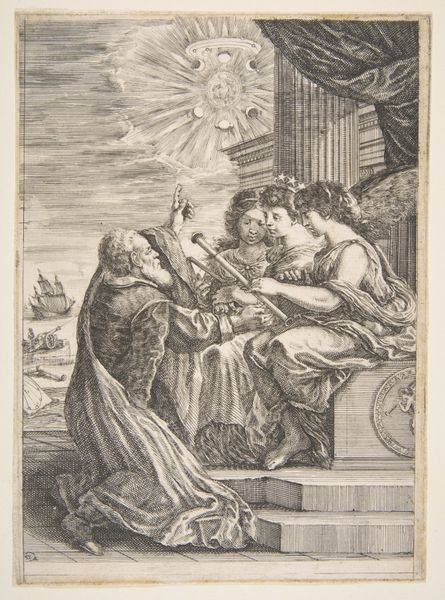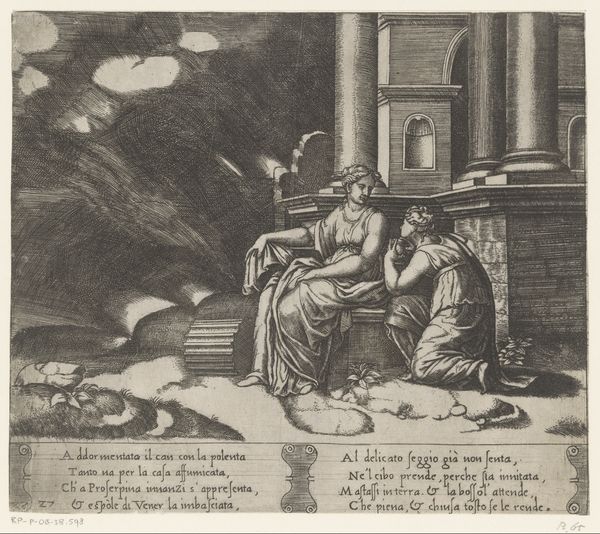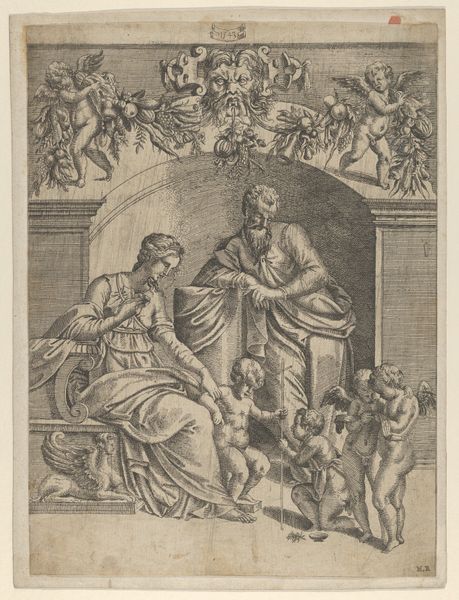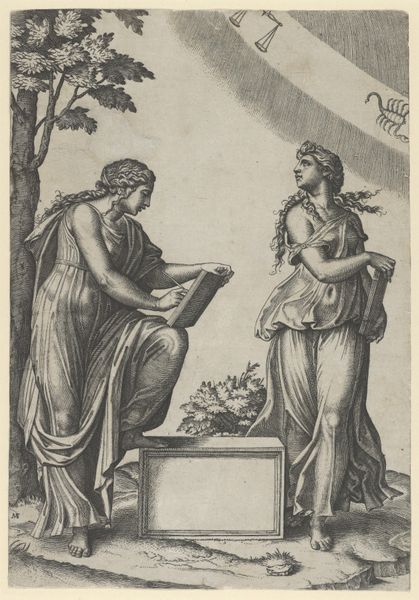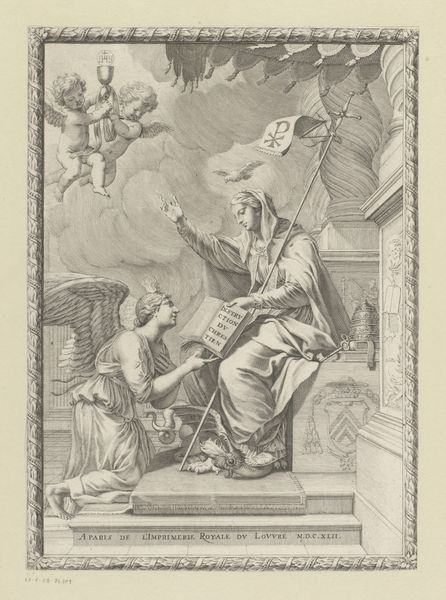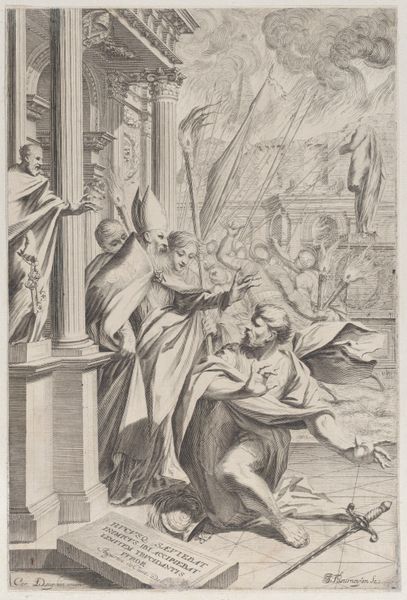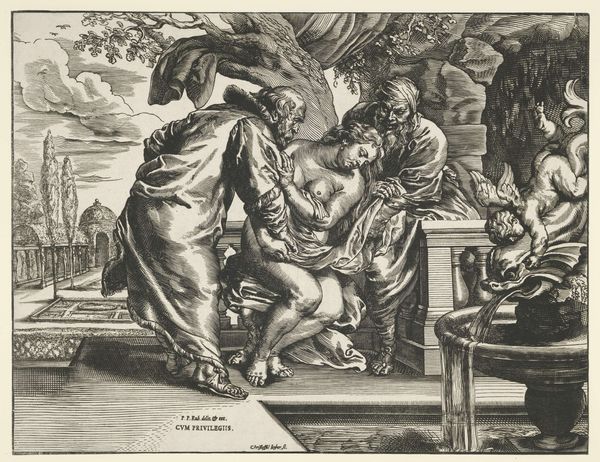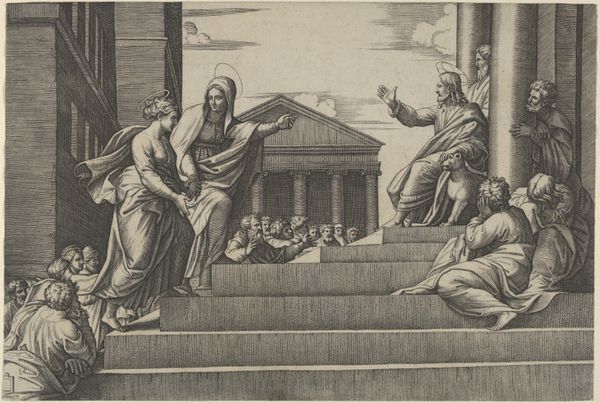
print, intaglio, engraving
# print
#
intaglio
#
old engraving style
#
mannerism
#
figuration
#
history-painting
#
engraving
Dimensions: height 200 mm, width 224 mm
Copyright: Rijks Museum: Open Domain
Editor: This intaglio print, "Psyche wordt bezocht door haar zusters," made by Meester van de Dobbelsteen circa 1530 to 1560, portrays a scene with women in classical robes near grand columns, with figures in the sky. There's a formality and almost coldness to the figures. What materials and production techniques do you feel shape our understanding of the work? Curator: As a print, this work exists within a complex system of production and distribution. Consider the labor involved: the engraver's skill, the printing process itself. This wasn't a unique artwork like a painting, but a reproducible image. How does that impact its accessibility and its role in society at the time? Editor: That's interesting. The fact that it’s a print means it could be disseminated widely, maybe even cheaply? Curator: Precisely. So, think about who could afford these prints. How would the consumption of images like this shape their understanding of classical mythology and beauty? The engraving technique itself, with its precise lines, echoes the Mannerist style but also reflects a specific workshop practice and available tools. Are these highly skilled or rushed? Editor: I hadn't really thought about the socio-economic factors involved in making and owning a print. So, it's not just the image itself, but how it was made and who had access to it that gives it meaning. Curator: Exactly! It challenges our modern idea of the singular, precious artwork. Think of it as an early form of mass media, shaping tastes and distributing narratives. The labor, the materials, the mode of reproduction - these all become critical layers of interpretation. Editor: Thanks, I never considered art through this viewpoint, analyzing its production as part of understanding its historical impact and meaning!
Comments
No comments
Be the first to comment and join the conversation on the ultimate creative platform.
